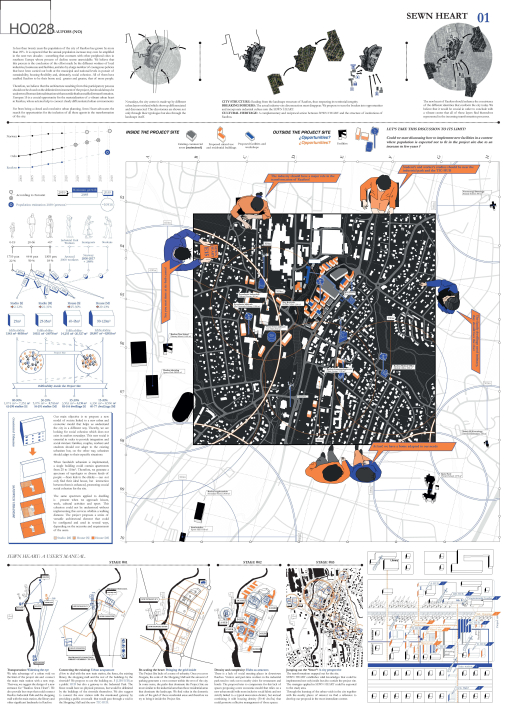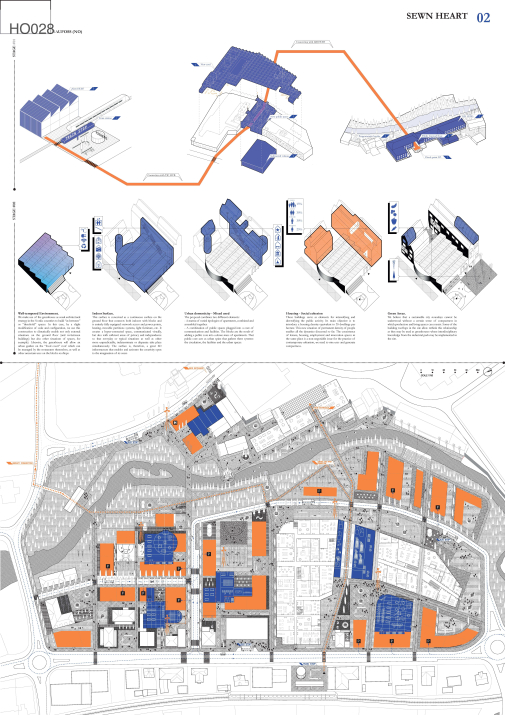Project:
Sewn Heart
About
-
In less than twenty years the population of Raufoss has increased by more than 25 %. It is expected that the annual population increase may be even more amplified in the next two decades – which contrasts with peripheral cities in Southern Europe, where a process of decline seems unavoidable. We believe that this process is the conclusion of the effort made by the different workers of local industries, businesses and facilities, and also by a large number of courageous policies carried out both at municipal and national levels in pursuit of sustainability, housing flexibility and, ultimately, social cohesion. All of them have enabled Raufoss to be their home and, to a continuous greater extent, that of more people
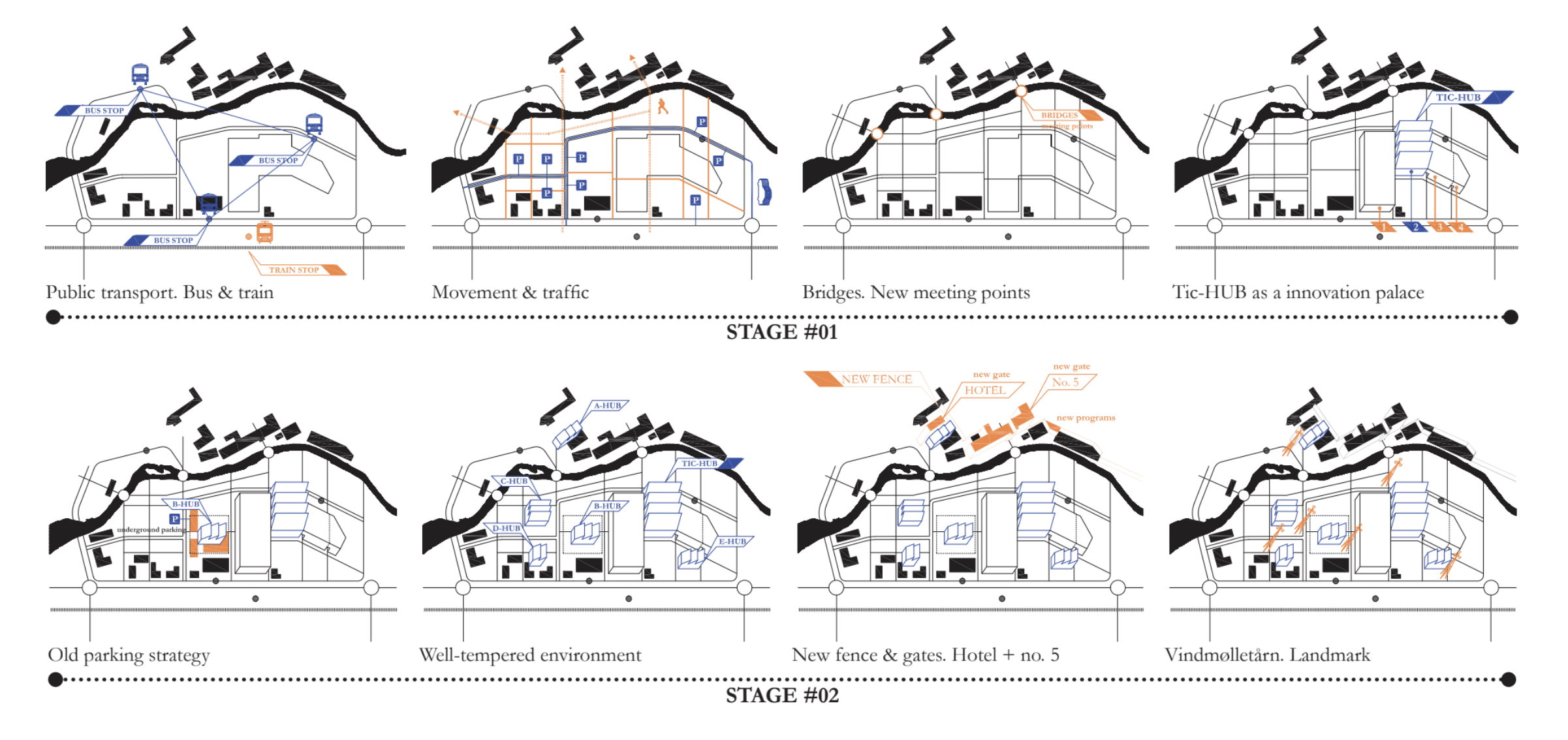
The transformations mapped out for the site. Therefore we believe that the architecture resulting from this participatory process should not be closed on the delimited environment of the project, but should always be understood from a relational situation with an outside that has enabled its transformation. Europan 15 is a crucial opportunity for the materialization of a vibrant urban heart in Raufoss, whose arteries help to connect clearly differentiated urban environments.
Far from being a closed and conclusive urban planning, Sewn Heart advocates the search for opportunities for the inclusion of all these agents in the transformation of the city. Nowadays the city center is made up by different layers or islands which show up differentiated and disconnected. These dichotomies are shown not only through their typologies but also through the landscape itself.
City structure: Reading from the landscape structure of Raufoss, thus respecting its territorial integrity.
Breaking borders: The actual industry–city disconnection must disappear. We propose to turn the borders into opportunities and incorpo– rate industrial culture into the SEWN HEART.
Cultural heritage: A complementary and reciprocal action between SEWN HEART and the structure of institutions of Raufoss.
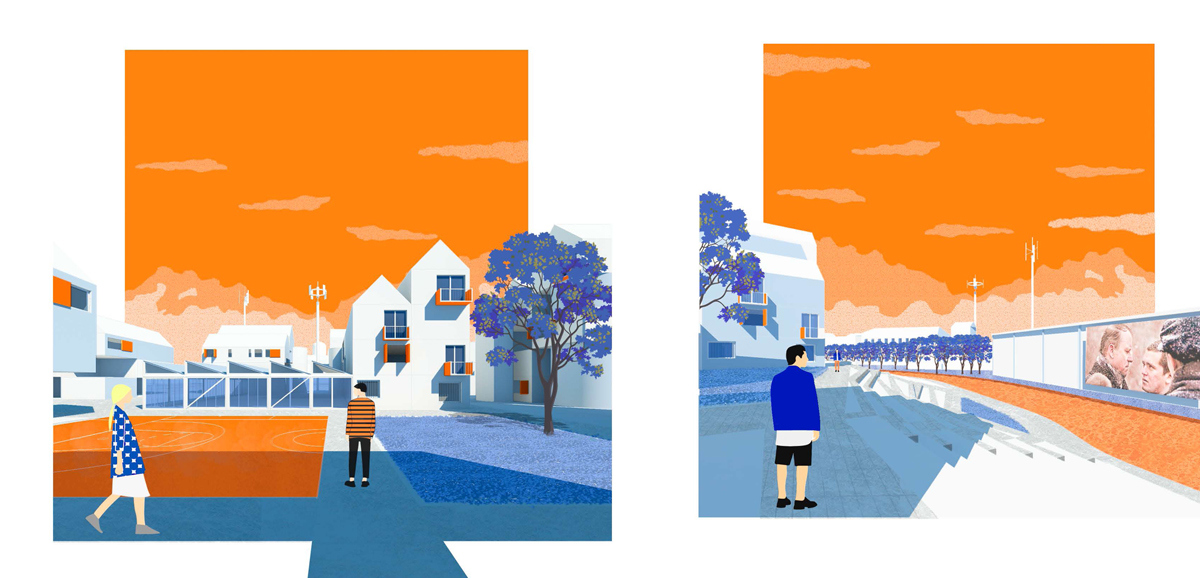
-
Sewn Heart is a systemic approach that allows for an incremental, yet holistic, transformation of the site into a new civic center for the future of Raufoss. The proposal combines a set of bold moves – a relocated train station, bridges stitching together the industrial and urban areas, and the opening up of an introvert shopping mall – with a fine–grain urbanism of small open spaces and carefully scaled mixed–use blocks.

The jury strongly believes that one cannot do one without the other and argues for the municipality to embrace the proposal as a whole. The jury believes that the combined effect of the proposal supports an open city beyond fences and introverted spaces; traits that today are hampering the development.
The jury appreciates that the project embraces a post–oil era with the introduction of soft mobility, compact mixed–used urban form and a fine grain pedestrian grid, urban farming and renewable energy. The industrial heritage aspect is approached conceptually through a systemic attitude, which nevertheless supports the development of a humanistic urbanism that is convincing.
“Sewn Heart“ is a systemic approach that allows for an incremental, yet holistic, transformation of the site into a new civic centre for the future of Raufoss. The proposal combines a set of bold moves – a relocated train station, bridges stitching together the industrial and urban areas, and the opening up of an introvert shopping mall – with a fine-grain urbanism of small open spaces and carefully scaled mixed-use blocks. The project embraces a post-oil era with the introduction of soft mobility, compact mixed-used urban form and a fine grain pedestrian grid, urban farming and renewable energy. The industrial heritage aspect is approached conceptually through a systemic attitude, which nevertheless supports the development of a humanistic urbanism that is convincing.

In Sewn Heart, civic space is not proposed as one singular place, it is rather a distribution of diverse spaces and places throughout the area. The jury considers this a convincing approach for a city in search of its identity. The distribution of new bridges and civic places also helps to connect the site with other sites in its surroundings. Hence, bringing the opportunity to be revitalized to overlooked places such as the former main street Storgata, Sewn Heart is not only a proposal for the site – it is a strategy for how to revitalize all of Raufoss.
-
Team Representative: Luis Navarro Jover (ES) – architect; Associates: Carlos Sánchez García (ES) – architect; Andoni Arrasate García(ES), Juan Manuel López Carreño (ES), Ignacio Burgos Alvarado (ES), Nuria Martínez Martínez (ES) – architects
La Errería * Architecture Office
c/ Ma Auxiliadora 2 - bajo izda, 03660 Novelda (ES)
+34 65 233 2894 - info@erreria.com – erreria.com
N. Martínez Martínez, L. Navarro Jover, J. M. López Carreño, A. Arrasate García, I. Burgos Alvarado & C. Sánchez García
Team interview
1. How did you form the team for the competition?
Carlos & Luis founded La Errería * architecture office in 2012. Some of us had previously worked in some national and international competitions. We formed the team according to affinities and skills. After Europan, we are now all friends and we are planning to go skiing to Raufoss!
2. How do you define the main issue of your project, and how did you answer on this session main topic: the place of productive activities within the city?
Our project proposes to accommodate a mix of homes that adapt and integrate families, couples, attached industry workers, students, etc. in apartments that are regulated from 25 to 110 sqm. These new typologies not only allow this desired social cohesion but also integrates other architectural elements such as leisure, sports, cultural and technological programs.
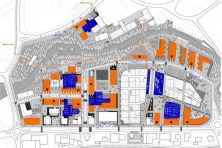
3. How did this issue and the questions raised by the site mutation meet?
The city centre is made up of different urban layers or island that appear to be differentiated and disconnected. These dichotomies are shown not only through their typologies but also through the landscape itself.
- CITY STRUCTURE. Reading from the landscape structure of Raufoss, thus respecting its territorial integrity.
- BREAKING BORDERS. The actual industry-city disconnection must disappear. We propose to turn the borders into opportunities and incorporate industrial culture into the SEWN HEART.
- CULTURAL HERITAGE. A complementary and reciprocal action between SEWN HEART and the structure of institutions of Raufoss.
The new heart of Raufoss should enhance the coexistence of the different identities that conform the city today. We believe that it would be crucial in order to conclude with a vibrant centre that all those layers find themselves represented in the incoming transformation processes.
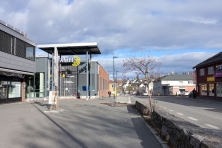
4. Have you treated this issue previously? What were the reference projects that inspired yours?
We had previously worked on other editions of Europan on Productive Cities. Our work on the city had been concretized in some projects such as those mentioned in question #4. Some references that have helped us in the process are explained in the attached images.
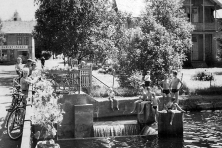
5. Urban-architectural projects like the ones in Europan can only be implemented together with the actors through a negotiated process and in time. How did you consider this issue in your project?
We believe that the architecture resulting from this participatory process should not be closed on the delimited environment of the project, but should always be understood from a relational situation with an outside that has enabled its transformation. Europan 15 is a crucial opportunity for the materialization of a vibrant urban heart in Raufoss, whose arteries help to connect clearly differentiated urban environments.
Far from being a closed and conclusive urban planning, Sewn Heart advocates the search for opportunities for the inclusion of all these agents in the transformation of the city.
6. Is it the first time you have been awarded a prize at Europan? How could this help you in your professional career?
Yes. We are working on the wide diffusion of our project in specialized media and catalogs. Also, in this context, we are currently developing in our office.
We are very pleased to know the great feedback the project has received from the Europan board and the synergies produced with the political representatives and the Raufoss' city planning team, specifying a calendar of new meetings that will take place in the city from next January.
TEAM IDENTITY
Office: La Errería * Architecture Office
Functions: Architects
Average age of the associates: 28.6 years old
Has your team, together or separately, already conceived or implemented some projects and/or won any competition? If yes, which ones?
Yes, we have previously won other competitions such as the International Biennale of Architecture Kraków 2017 and the runner-up in the Health Sciences Faculty for the University of Alicante. Many built works by La Errería * architecture office (mainly residential ones) has been rewarded in several national and international competitions.
Downloads
Related projects
-
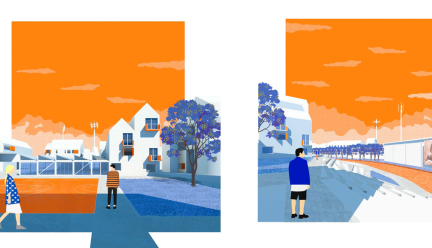
Sewn Heart
Sewn Heart is a systemic approach that allows for an incremental, yet holistic, transformation of…
-
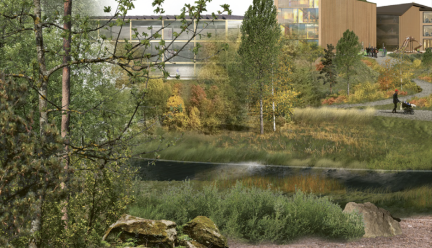
Today and Tomorrow
Norway is well known as one of the wealthiest countries in the world and Norwegians live in…
-
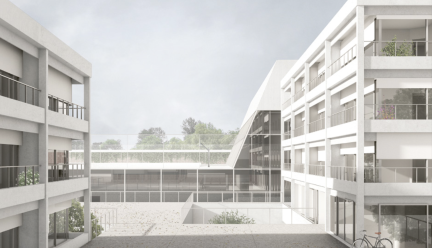
This Must Be The Place
As the future development of Raufoss requires a city centre that can accommodate an expansion of…
